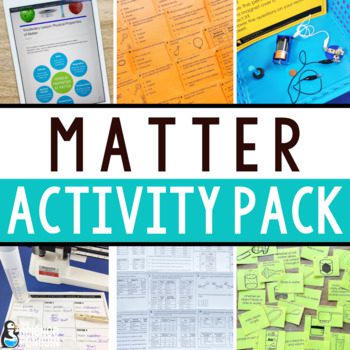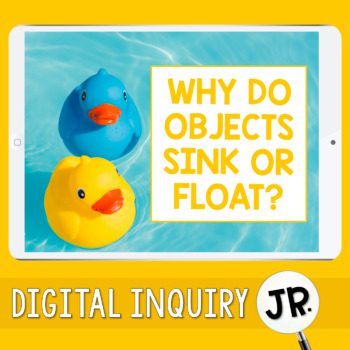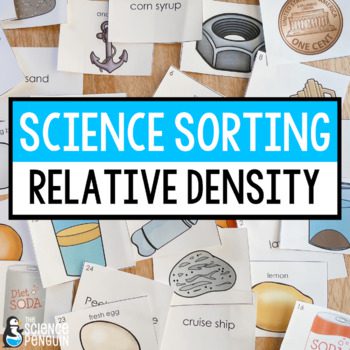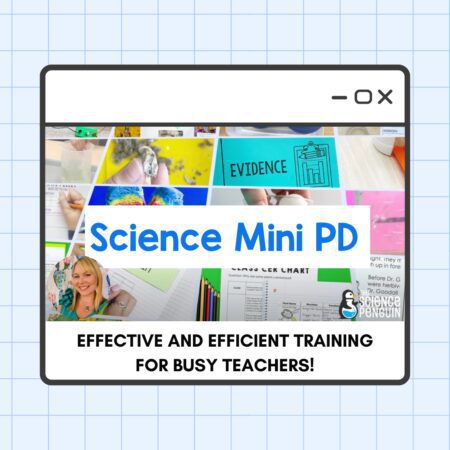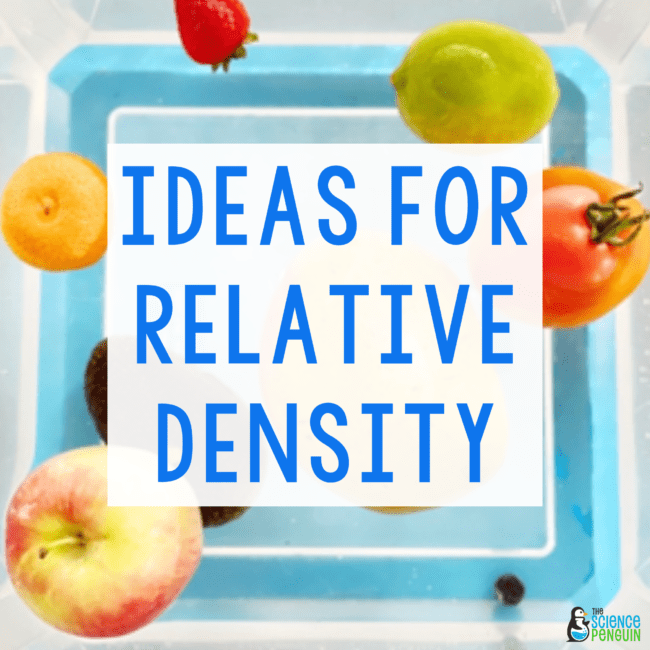
Relative density can be an amazing unit for students K-6… we just need to add some hands-on investigations to take “sink or float” to the next level.
BTW, in 4th and 5th grade, I like to use the term relative density rather than sink or float.
In those grades we also study mass and volume so we can use the relationship between mass and volume in density as well. I don’t introduce the formula just yet unless an advanced student is ready for it.
Since students often come into the upper grades with some experience with sinking and floating, it’s a good topic to dive deep by incorporating relationships, cause and effect, and CER (claim, evidence, reasoning) to explain why large ships float.
Here are 10 ideas for relative density.
1. 🌳 Natural Objects

Set up a tub of water outside and look around the schoolyard to find natural objects to test.
Discuss which items float and which sink.
Discuss why they sink or float.
Discuss how one material could be used based on its ability to sink or float.
2. 🍊 Peeled vs. Unpeeled Orange
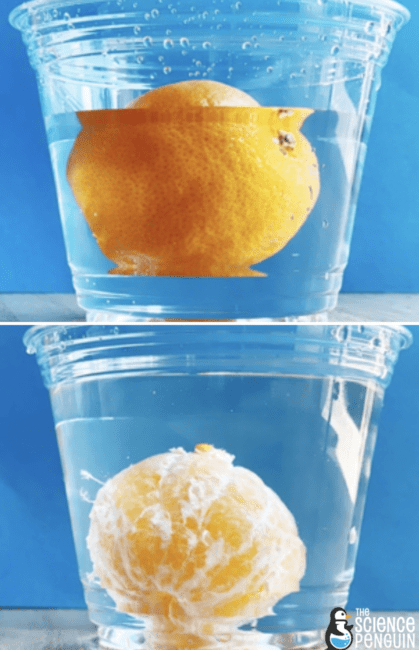
Let’s compare the physical properties of an orange with a peel to a peeled orange.
For this activity I used mandarin oranges.
We compared the volumes and masses of peeled vs. unpeeled and observed their relative density.
Then we wrote a simple claim with evidence to explain why the peeled orange sinks while the unpeeled orange floats.
Try it on your own or see more in Matter Labs in a Snap on TpT: Labs in a Snap
3. 🧃Relative Density in a Density Column

Density columns are a popular hands-on lab for good reason. You can use whatever materials you have on hand and they are FUN!
In this density column, I used light corn syrup, blue-colored water, and vegetable oil. There are a few tiny objects in there too.
After you make your density column you can practice making statements comparing the densities of matter.
4. 🛳 Ships, Mass, Volume, & Buoyancy
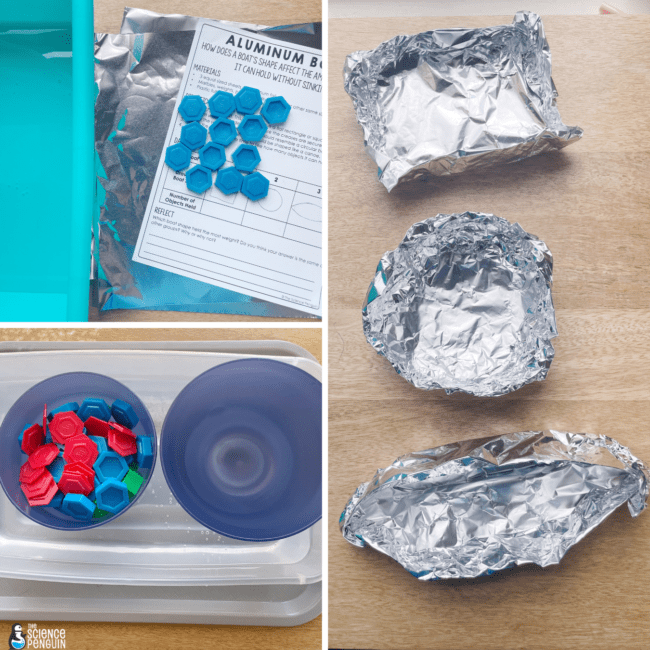
This is one of my favorite units ever and perfect for 5th grade.
Explore why massive objects like ships float in water. Follow the 5E Model, incorporating CER, hands-on activities, reading, science notebooks, investigations, vocabulary, a quiz, and an open-response prompt.
See it on TPT: Ships Phenomena-Based Science
5. 🥚 Egg in Water
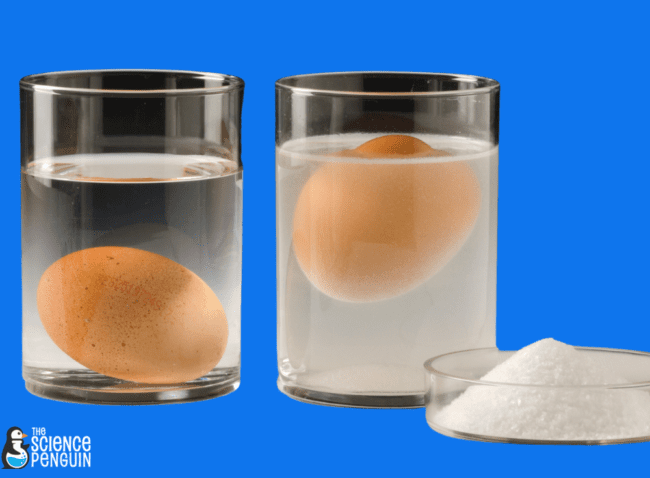
There are a couple of ways to introduce this activity. First, you can use Relative Density Observation Stations which includes 6 demos for students to analyze.
Second, introduce it as a challenge. Fresh eggs sink in water. So how can you make it float? Make a list of student ideas.
A somewhat saturated saltwater solution will make the egg float. BTW… letting the egg rot will also make it float. I do not recommend. 😅
6. 🎥 Film Canisters
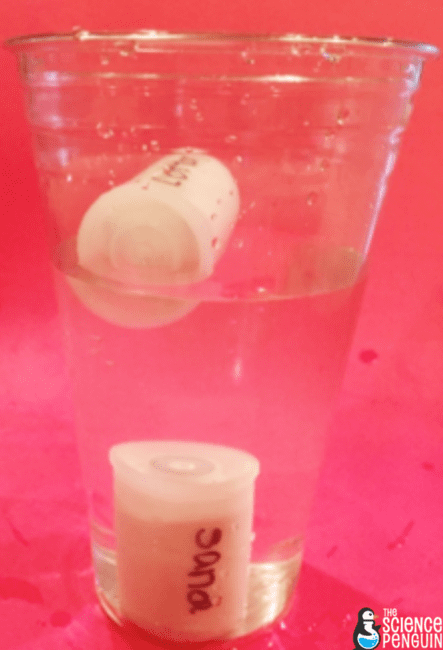
You can use old film canisters (or pick some up at a craft or dollar store). Fill and label them with different materials that will take up the entire space) and toss them in the water.
I recommend:
- cotton balls
- sand
- juice
- oil
- salt water
7. 😟 Sink or Swim Challenge

Set the stage: A sad stone landed on a deserted island and wants to go back home. Build a raft using only natural materials on the island.
Criteria: The raft must hold the stone, float for 1 minute, and be made completely from natural materials.
I did this activity outside and the students loved the challenge.
Materials:
- tub of water
- outdoor materials (bark, sticks, grass, etc.)
- stone (sad face optional)
8. 🛶 Aluminum Foil Boats Challenge
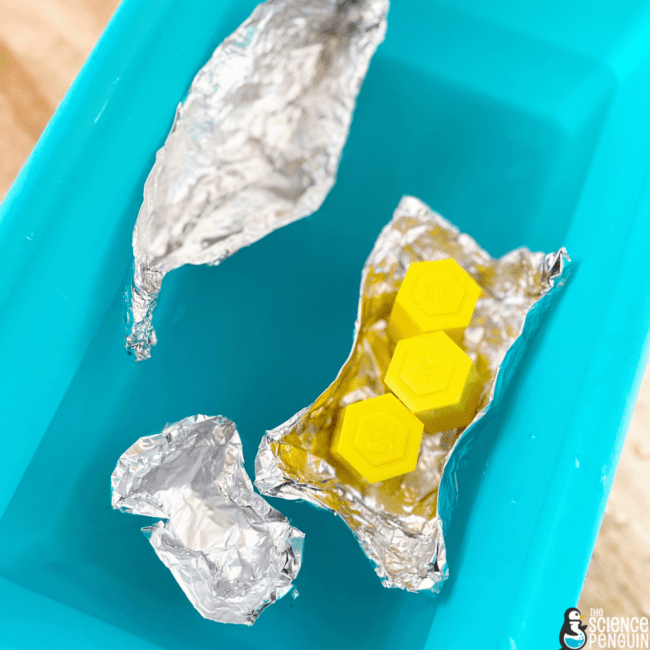
This challenge is part of Science Day for K/1 but can be used with many grade levels.
Task: Design a boat that will:
- float in water
- made of aluminum foil
- can hold 60 grams or 20 pennies
Don’t rock the boat baby!
9. 🤓 More or Less Dense than Water Sort

Students love to move and learn with Sorting Relays!
Teams review by sorting examples related to relative density in a relay race.
Other ideas for use are included as well. 😀
See it on TpT: Relative Density Science Sort
10. ✏️ C-E-R
You can practice supporting claims with evidence and reasoning for just about any of the relative density demonstrations.
Here’s an example for the peeled vs. unpeeled orange activity above.
Claim:
Despite being smaller in mass and volume, a peeled orange sinks in water while an unpeeled orange floats in water.
Evidence:
- The peeled orange’s mass is 29 grams. The unpeeled orange ‘s mass is 39 grams.
- The peeled orange is smaller in volume than the unpeeled orange.
- We observed the orange with the peel float.
- We observed the orange with no peel sink.
- Drawings and diagrams would make good evidence here too!
Reasoning:
The orange with the peel is less dense than the peeled orange because the peel has air pockets that make it float, similar to a life jacket.
Access the Free Resource Library
This is an exclusive library of 40+ science printables, labs, activities, and games for grades 3-6. Sign up and check your email for immediate access.

